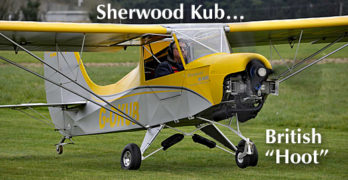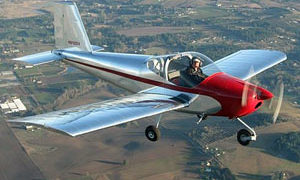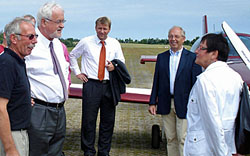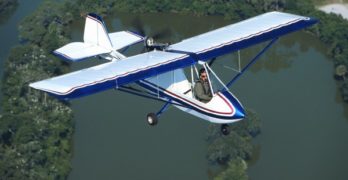As regular readers know, I promote ByDanJohnson.com as the home of “affordable aviation.” I even own the domain name AffordableAviation.com.
Yet “affordable” is one of those very personal words. What each of us can afford — or chooses to afford — is different than almost everyone else.
Therefore, an especially wide range of choices is good. I have written a lot about very inexpensive aircraft (see many in this series of articles) and you can find lots more from $8,000 to $180,000.
Yesterday, a premium supplier of Light-Sport Aircraft made their new entry more affordable.
Lower-Priced Colt
Texas Aircraft Manufacturing announced they are now offering an entry-level Colt Special LSA with a single Garmin G3X Touch flight display at a much-reduced price. The company’s first offering listed for $167,000.
“As we come out from under Covid-induced flight training restrictions, operators of several flight schools have come to us asking for an affordably-priced, all-metal, Garmin-equipped training aircraft,” CEO, Matheus Grande, stated.
Search Results for : CGS Hawk
Not finding exactly what you expected? Try our advanced search option.
Select a manufacturer to go straight to all our content about that manufacturer.
Select an aircraft model to go straight to all our content about that model.
Sherwood’s Kub — Fun, Light Recreational Aircraft from Across the “Pond”
While occupied on some travel, I am pleased to provide a pilot report on a Part 103-type from across the Atlantic in the United Kingdom. Who better to report this to you than my counterpart in Britain, Dave Unwin. Dave has flown a huge number of aircraft of all sizes. When he writes about lighter aircraft, I enjoy presenting his views. Comments in italic are my amplifications. This time I present Dave’s article with minimal editing so you can enjoy his British style. This means it is longer than our usual fare but I found it a fun read and I hope you will, too…
All the great pictures were shot by photographer extraordinaire, Keith Wilson. Thanks to Dave and Keith for a great story. —DJ
As I turn onto final James Milnes’ voice suddenly crackles in my headset, “Golf Oscar Kilo Uniform Bravo, don’t forget it’s a tailwheel today!” The reason for James’ timely reminder was that when I’d flown the same aircraft a few weeks previously it had been configured as a trike, but today it’s a taildragger!
Is 2011 the Year of the ELSA?
One of the “diamonds in the rough” of the LSA movement has been the kit LSA or Experimental LSA or simply ELSA. For the first five years of Light-Sport Aircraft, fully manufactured Special Light-Sport Aircraft dominated the sales figures. With very few exceptions, ELSA were nowhere to be found. That’s begun to change, perhaps as voices have been getting louder about the prices of today’s well-equipped and surprisingly capable SLSA. Are ELSA a way to constrain the cost for consumers? Maybe. *** In February EAA reported that worldwide GA aircraft shipments included 889 piston-powered aircraft plus a slightly larger number of business jets and turboprops. Shipments declined 11.4 percent because of the struggling economy. However, EAA said, “Interestingly, homebuilt aircraft registrations continued their growth in the U.S. last year. A total of 941 homebuilt aircraft were added to the FAA registry in 2010, an increase of 10 percent from the previous year.
Breezer a Hit with German Prime Minister
Politicians take actions that are often viewed negatively by small business owners, which term basically defines nearly every LSA producer. But sometimes government leaders do good things; this may be one of those stories. Even while EASA (the European equivalent to FAA) talks about job-killing regulations, perhaps the cottage industry of Light-Sport Aircraft discovered a new friend in high places. *** Breezer Aircraft makes a handsome and impressive all-metal airplane in the north of Germany. The design has been around a decade but new management took over in 2006 and they’ve been forging ahead. Among other positive developments, Breezer recently moved to a new airfield and they were surprised and pleased when a German state official showed up to helped commemorate the event. “Schleswig Holstein (the northernmost of the 16 states of Germany) Prime Minister Carstensen opened our airfield,” boasted Breezer officials. “This is already pretty remarkable.
Judging Winners Sun ‘n Fun 2010
I once followed judging at shows like AirVenture and Sun ‘n Fun. In fact, an aircraft I helped inspire — a modernized primary glider called the SuperFloater — won Outstanding New Design at Sun ‘n Fun 1995. Judges closely examined homebuilts, kit or restored vintage airplanes, and warbirds. If they included factory built aircraft, I was not aware of it. *** So, this year I admitted surprise after learning factory-built Light-Sport Aircraft won awards. *** To honor the hundreds or thousands of hours people put into their winners, I want to highlight some LSA and ultralights that judges liked. The Grand Champion LSA was Wayne Spring’s 2010 Predator powered parachute; Reserve Grand Champ was James Jonannes’ 2009 Arion Lightning LS-1; Grand Champion Ultralight was James Wiebe’s 2010 Belite Superlite; and, Reserve Grand Champ was Danny Dezauche’s 2010 CGS Hawk Ultra.
Breezer II, Part II, Act I… All-Metal LSA Redux
It didn’t work out the first time. Breezer I wasn’t quite mature for market. The import structure was unwieldy adding cost and distancing the customer from the source. As Breezer Aircraft took over manufacturing of the all-metal LSA, Breezer II arrived in 2008 joining new leadership in Europe with fresh representation in the USA. *** As of Sebring 2010, central Florida light aircraft guru Mike Zidziunas — or simply “Mike Z” — will become the point man for Breezer Aircraft USA. And he’ll handle things differently from most LSA sellers. His plan is more like that used successfully by Cirrus. The source of the airplanes handles the whole country using representatives in various areas as touch points. “I feel that the conventional dealer network is ponderous and it’s difficult to control the quality of service,” expressed Mike. “To address service after the sale, when we deliver the airplane we offer as part of the purchase of the airplane a 5-hour FITS-style pilot training program.
Ultralight Trainers…Exemptions?…SLSA Trainers
Ah, sweet Part 103 ultralights. These lightest of powered aircraft have the least FAA regulation of any flying machine. A single piece of letter paper holds the entire rule. But how do you learn to safely fly a single seater? Oh, there’s the rub. *** Through January 31, 2010, two-seat ultralights converted to ELSA status may train pilots for hire. Then they must cease… maybe. Some feel that the nation lacks enough such trainers so Aero Sports Connection petitioned for an extension. Sounds reasonable. *** But what about companies that spent resources to win FAA approval? It sounds like those who played by the rules as FAA wished could miss their reward of taking over such training aircraft sales. The controversy has complications and you probably don’t want to read it all. *** But here’s what industry organization LAMA has to say: “In the 4.3 years since the first approval, 100 SLSA models have been approved.
Successful Low-Cost Light Planes
“I started the company in 1983, and I still own it,” reports Dave Goulet, the main man behind the Challenger aircraft design and Quad City Ultralight Aircraft Corporation. “In fact,” he adds, “it’s probably the oldest ultralight company still under the same management. “After reviewing all the ultralight companies I can think of, I’m inclined to agree.”
Thinking of other long-term operations, Goulet mentions The New Kolb Aircraft Company, whose roots are also planted deep, but even that storied company has now changed ownership… twice in the last decade, and most recently just a couple years ago.
Quicksilver Mfg. has been around longer, but the revolving door of managers and several changes of ownership have long since taken that familiar brand out of contention for continuous leadership.
About the only challenge to Challenger’s continuity reign that I can think of would be Chuck Slusarczyk, designer of the Hawk series, and his company, CGS Aviation.
Ultralight Trainers for the Future
A more real concern about the
future of ultralights revolves around
the availability of ultralight trainers
to prepare new pilots for flight in
Part 103 ultralights like the Ultra.
Wonderful as many of the new LSA
may be, most are inappropriate aircraft
to train you for flight in a Hawk
Ultra|or almost any other genuine
103 machine. The question ponders
the likelihood of companies building
ultralight trainer-type aircraft as
fully built, fully certificated special
light-sport aircraft (S-LSA), the minimum
standard to which all trainers
must be built once the two-place
exemptions expire on January 31,
2008. (Note: Two-place trainers that
have transitioned to experimental
light-sport aircraft status, E-LSA, can
still be used for training purposes by
the original owner/instructor until
January 31, 2010.)
Even if ultralight manufacturers
do choose to build an S-LSA trainer,
will it be affordable? Again, consumer
demand will play a role in
this decision; CGS is evaluating the
market and may create an S-LSA
ultralight trainer.
How-to-Buy a Lightplane — Part 3 of 3
In the previous two installments, we’ve discussed you, the pilot, and the many types of aircraft choices you have. As we wrap up this series, we’ll put it all together and try to help you narrow your choices to a few models.
Notice the word “try.” It is important that you understand that it is not possible to direct you to the one-and-only best choice of aircraft. Novice buyers often seek assistance but even experienced pilots can become swayed and end up purchasing the wrong aircraft for their needs and desires. Because aircraft purchases are commonly emotional decisions, it is helpful to gain a “second opinion” to help make a more rational choice.
Many years ago, at the beginning of my career writing articles in light aviation, I made a similar attempt to help hang glider pilots choose the right glider. I compared nine contemporary models to an idealized “perfect” glider and through a series of questions much like those below, tried to steer pilots to the one right glider for them.
- « Previous Page
- 1
- …
- 4
- 5
- 6
- 7
- Next Page »










